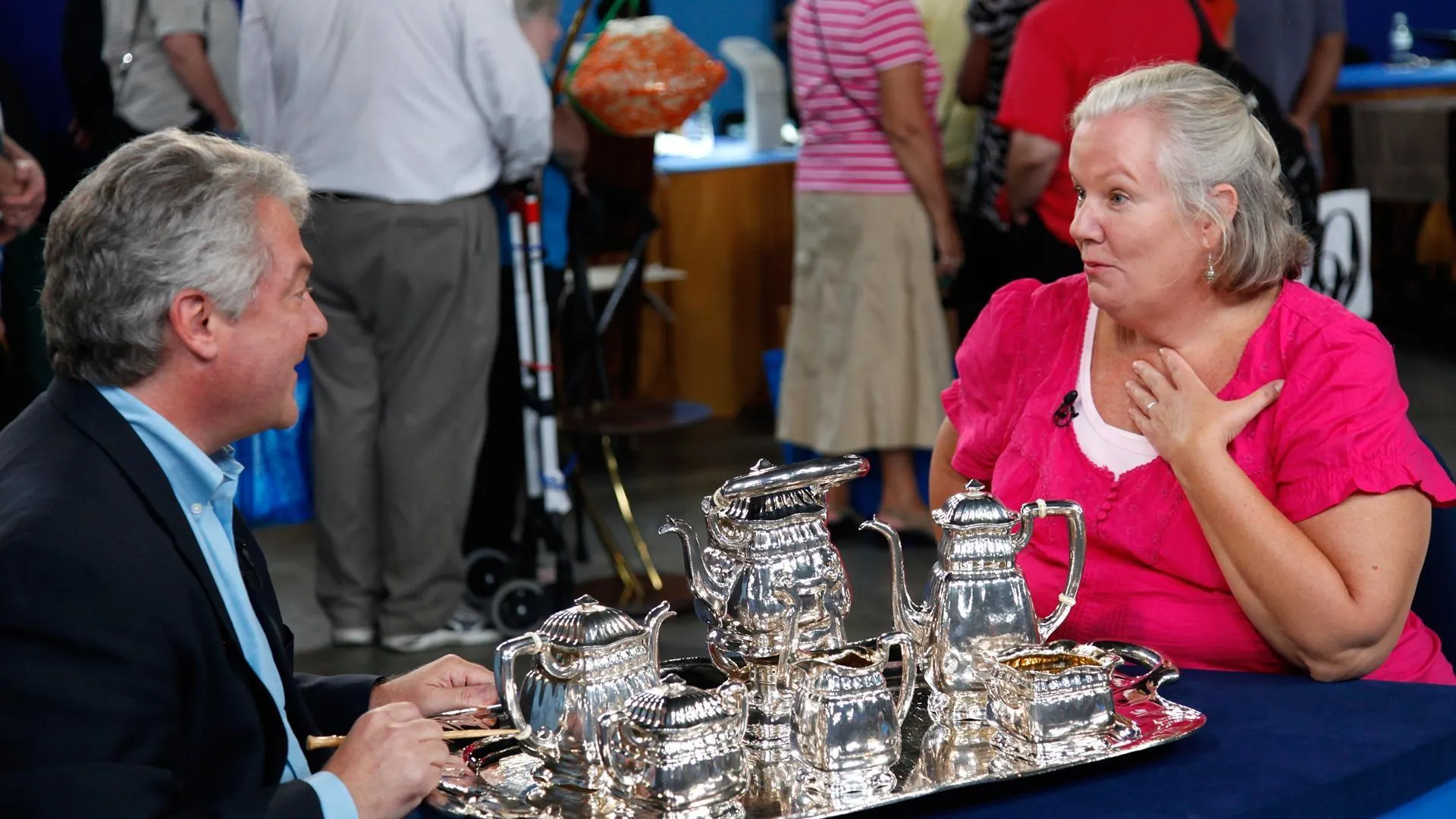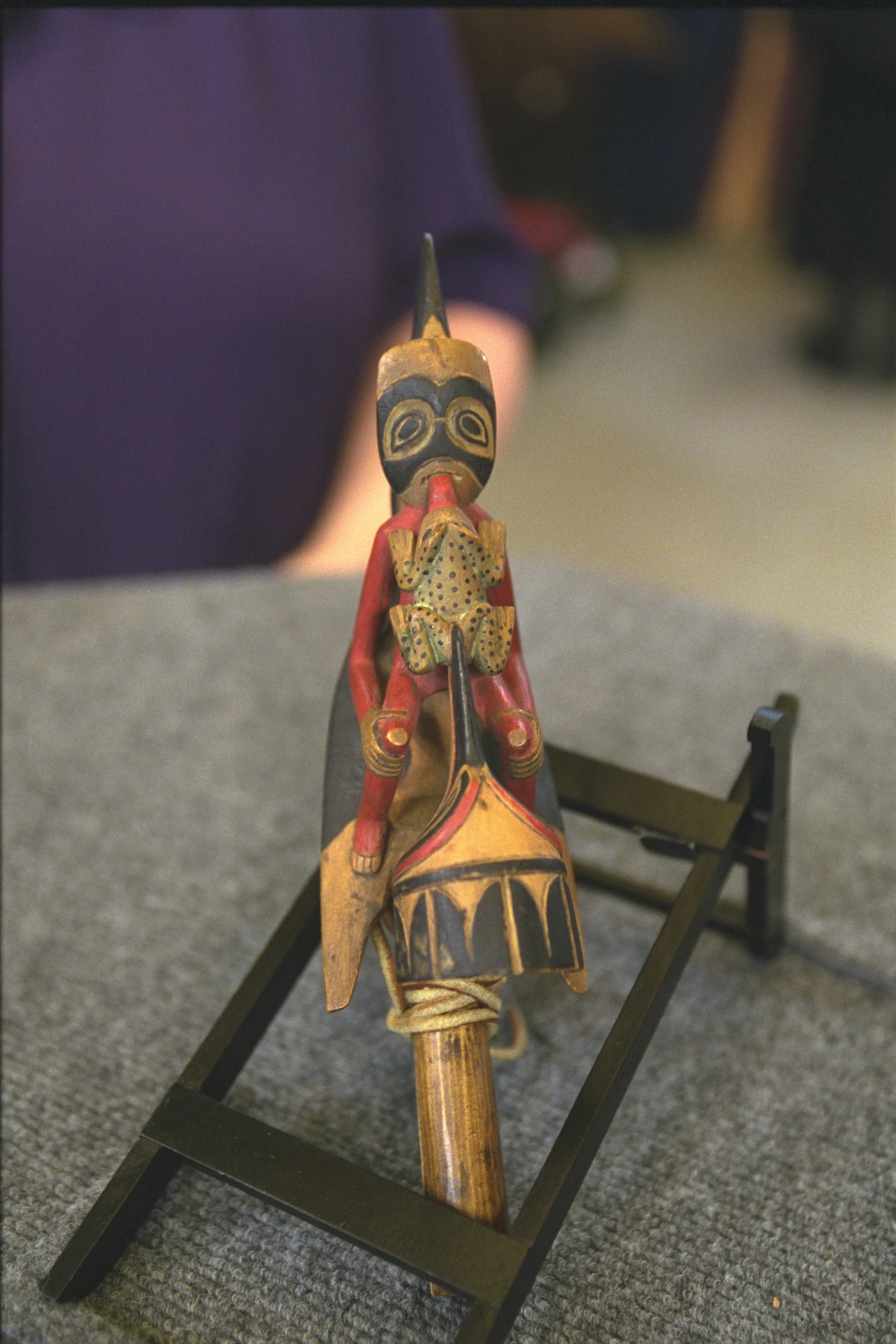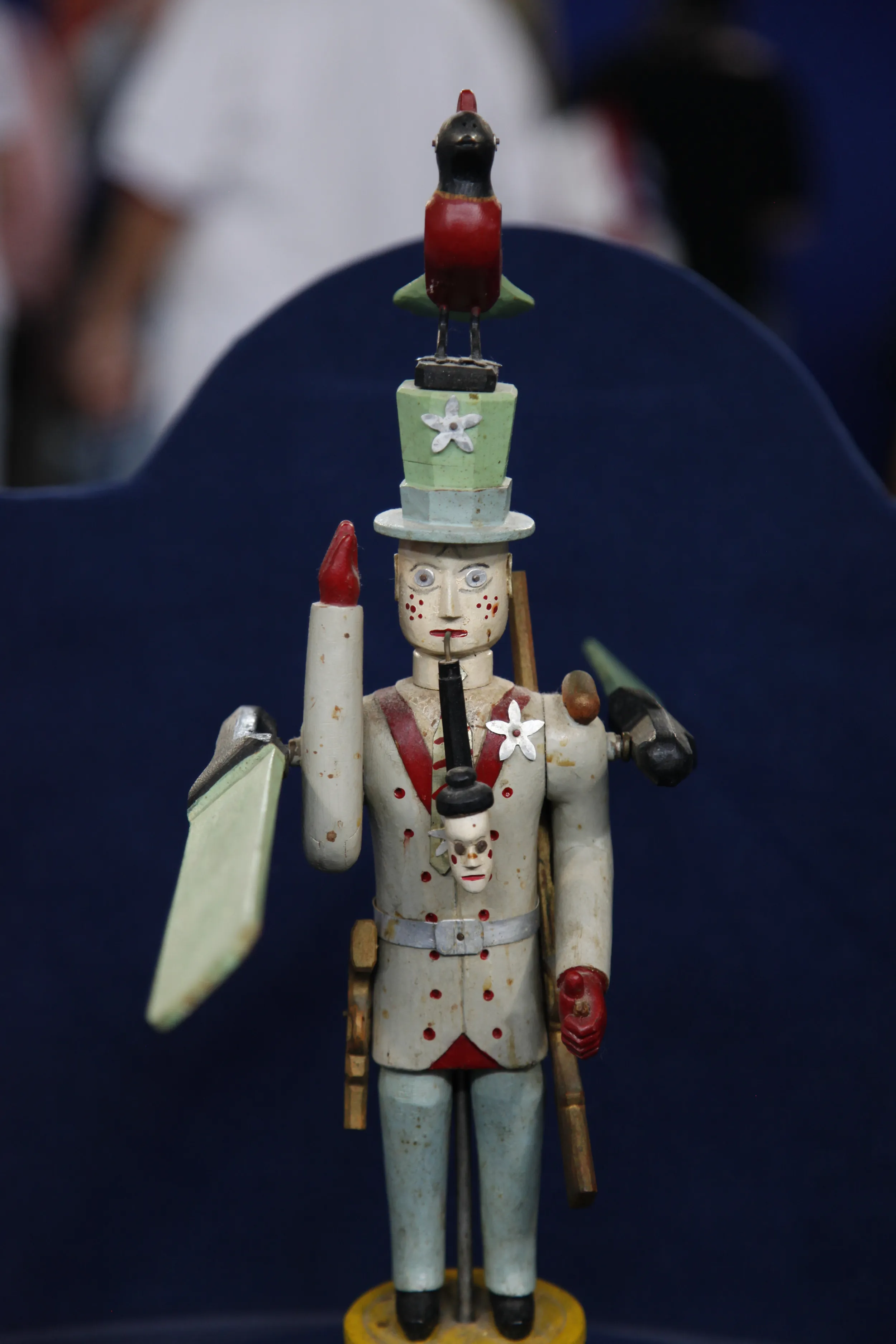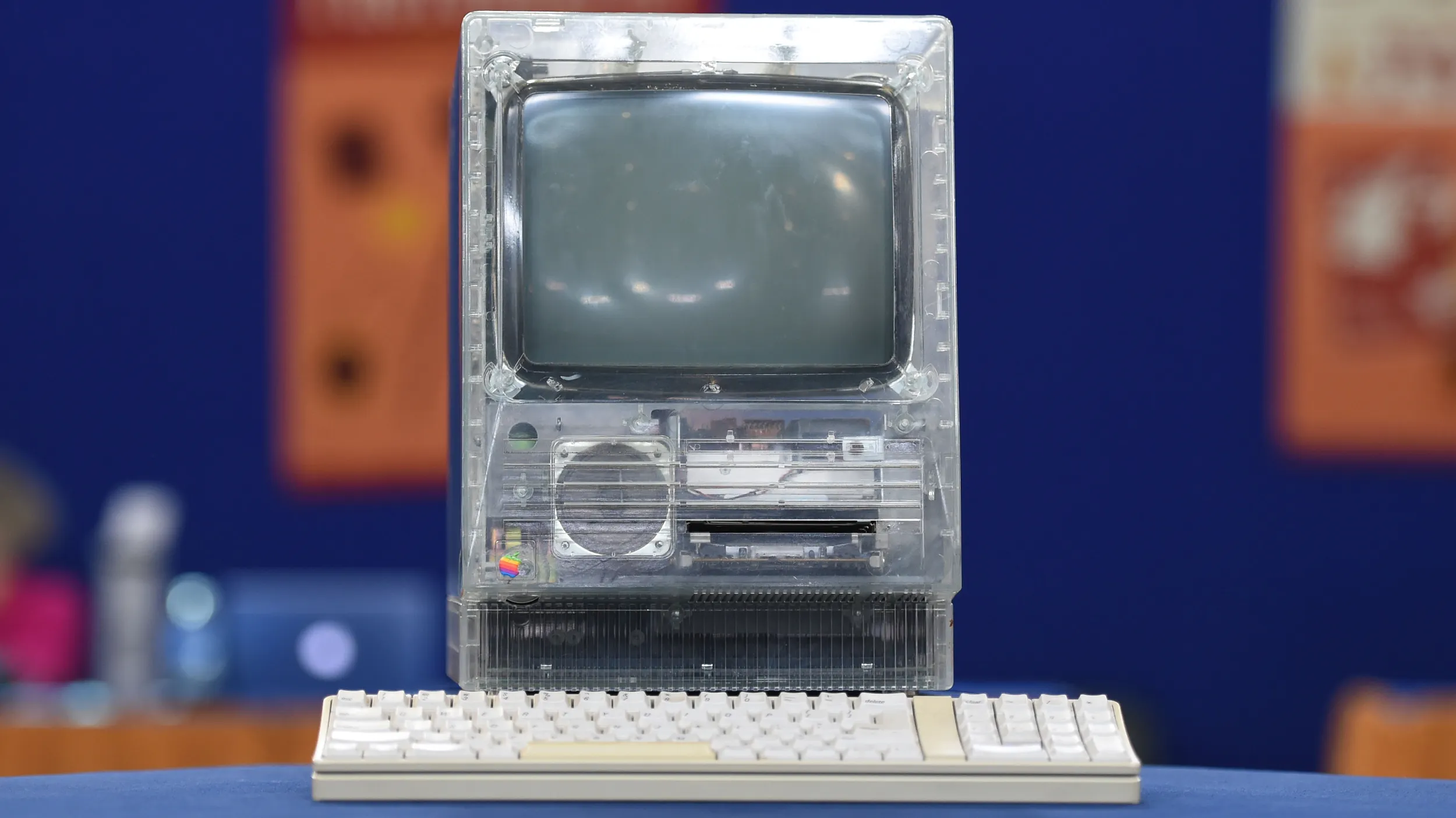GUEST: I saw it in an antiques store in Old Town Alexandria. And they had a whole bunch of different weathervanes. I like weathervanes to start with, but a fish I had never seen before. I'd seen, you know, horses and all kinds of things. And it just looked really interesting and it kept kind of calling to me, the way things do. And I went back to it three times and it was still there, so I thought...
APPRAISER: At the show, right?
GUEST: Yeah. This is about six years...
APPRAISER: how many years ago?
GUEST: 2004.
APPRAISER: And it was sold by a dealer to you at the show. What was it described as?
GUEST: He said it was late 19th century, early 20th century from the Boston area. And he said it was a codfish.
APPRAISER: Did he mention a company that it was made by?
GUEST: I think he did, but...
APPRAISER: Was it Fiske or something?
GUEST: Fiske, that's right, yeah.
APPRAISER: J.W. Fiske. The reason I know is when you came in, I saw part of the receipt. May I ask what you paid?
GUEST: I paid $17,500, which was quite a sticker shock, I have to say.
APPRAISER: When I did first see this come in, I smelled something fishy, no pun intended. I smelled something fishy in the sense that I look at vanes all the time, there's a tendency for people to want to make a vane look older. It's very easy for any collector to look at this and think it's an old vane. And you've been a collector. At the same time, part of the Roadshow's job and our journey is to educate. So I want to say that right off the bat. I feel that it is not a late 19th century copper weathervane. Weathervanes go back to Greek times. And the farmers, for centuries, they've used it. The original weathervanes, ones that are authentic, are really made and balanced so that they could be used, okay? Later vanes that were made to look like old vanes don't care about that because it's just a decorative object. It wasn't made to actually function. If you look at the whole thing overall, it has a heaviness about it, it has a lack of detail that you see on the vanes that are made new. And, most importantly, the surface, on the original vanes, they did all kinds of things. They painted them gold originally. That wore off down to the copper, and then it became this wonderful verdigris, oxidized copper, which everybody loves. This vane has a combination of just stuff put on there to make it look old. And what I think this weathervane is is a new vane that was made honestly, and then someone faked it up to accommodate the weathervane market, which is very high right now. An Indian weathervane recently sold for over $5 million in New York at auction. This was a couple years ago. And certainly fish weathervanes have brought up to $100,000. So there is incentive; there is, you know, motivation.
GUEST: Yeah, reasons.
APPRAISER: For unscrupulous people to make something look older than it is. Also, very importantly, the seams here are just bent over and probably glued inside. On the early vanes of this type that were made by Fiske and other people from the 1860s to 1910, 1920, they would be soldered in lead and then it would be filed, right, smooth. And I think that make sure that you buy from a dealer with a guarantee, that guarantees his merchandise. And, and...
GUEST: Yeah, I'll be checking into that.
APPRAISER: I figure that.
GUEST: I have a number of pieces from...
APPRAISER: One person.
GUEST: ...that person.
APPRAISER: Well, you know...
GUEST: Hopefully this is the only dud, but...
APPRAISER: This would probably have a value in a shop of... I kind of hate to say this, but you're probably guessing it's not going to be a lot.
GUEST:(laughs) No.
APPRAISER: It's a decorative value of about $500.
GUEST: Well...
APPRAISER: So that's really what it's worth.
GUEST: $17,500 versus $500 is, you know, close.
APPRAISER: Close... (laughing) There's a big difference in between, I know. I have a feeling you're going to get the money back. I'm going to be optimistic.
GUEST: I hope so.











